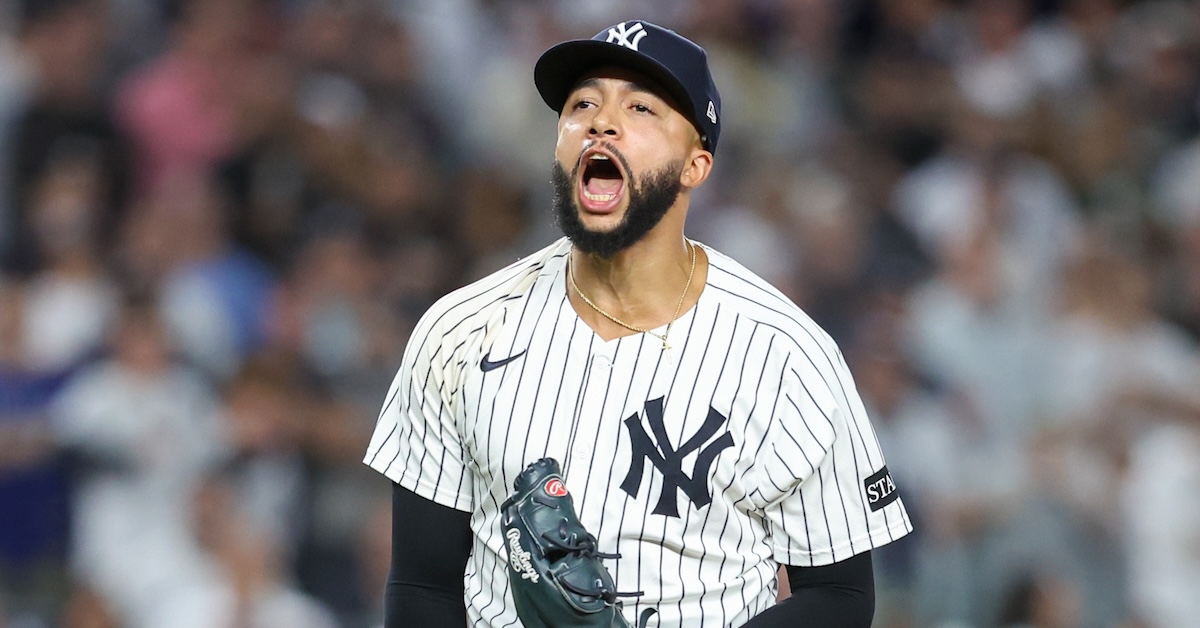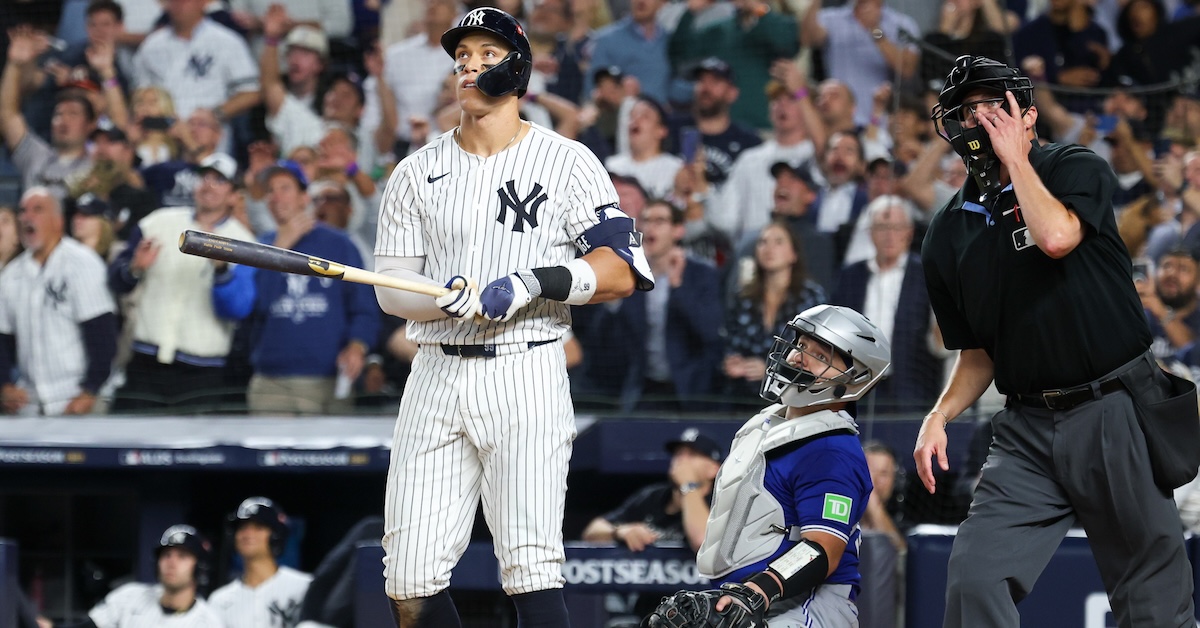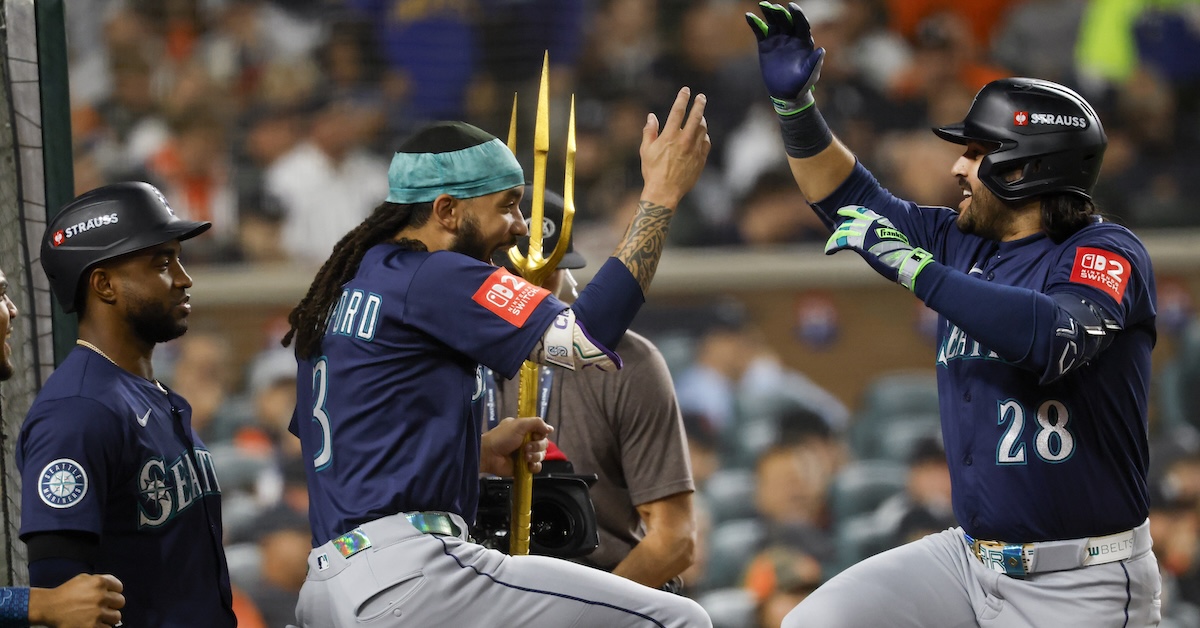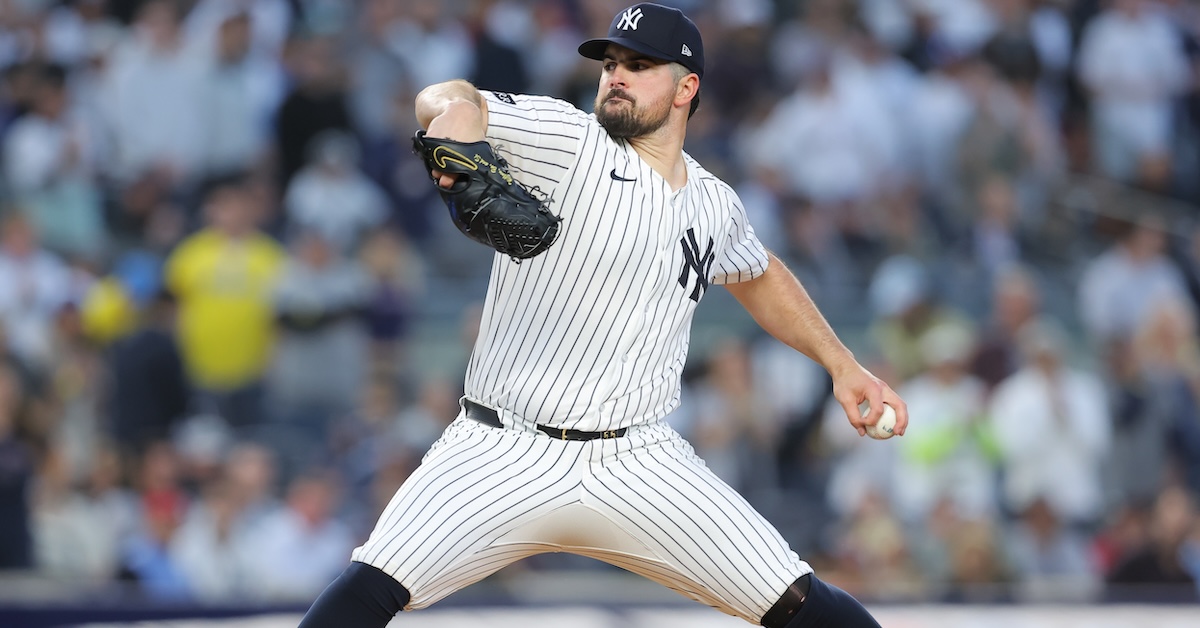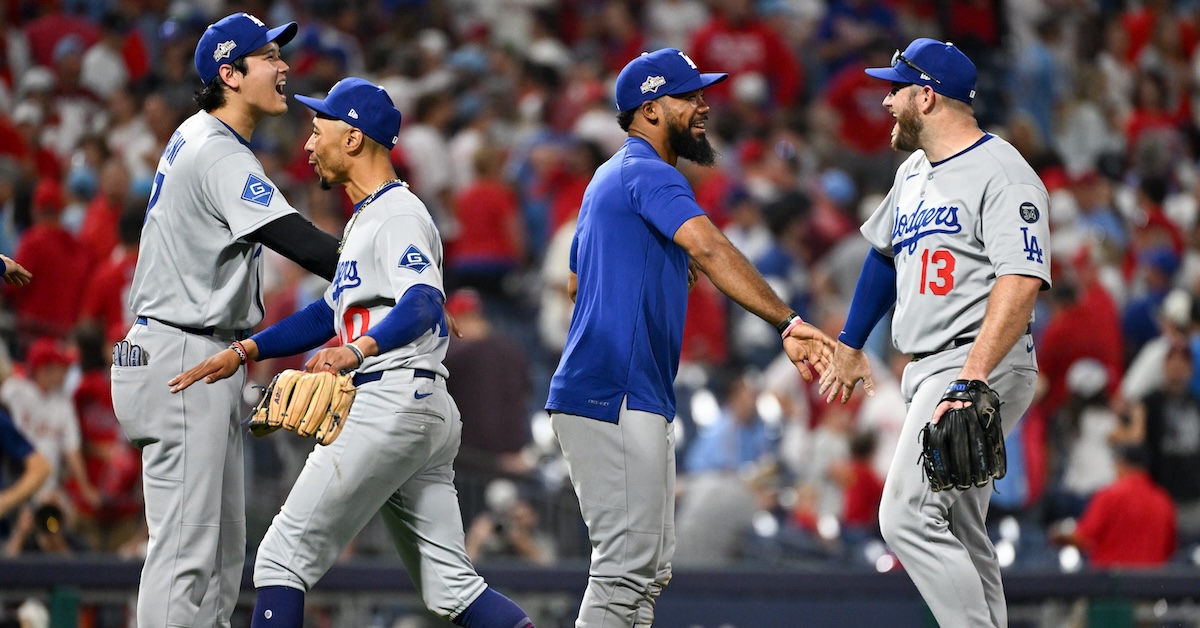Tigers Roar Back, Send ALDS to Game 5
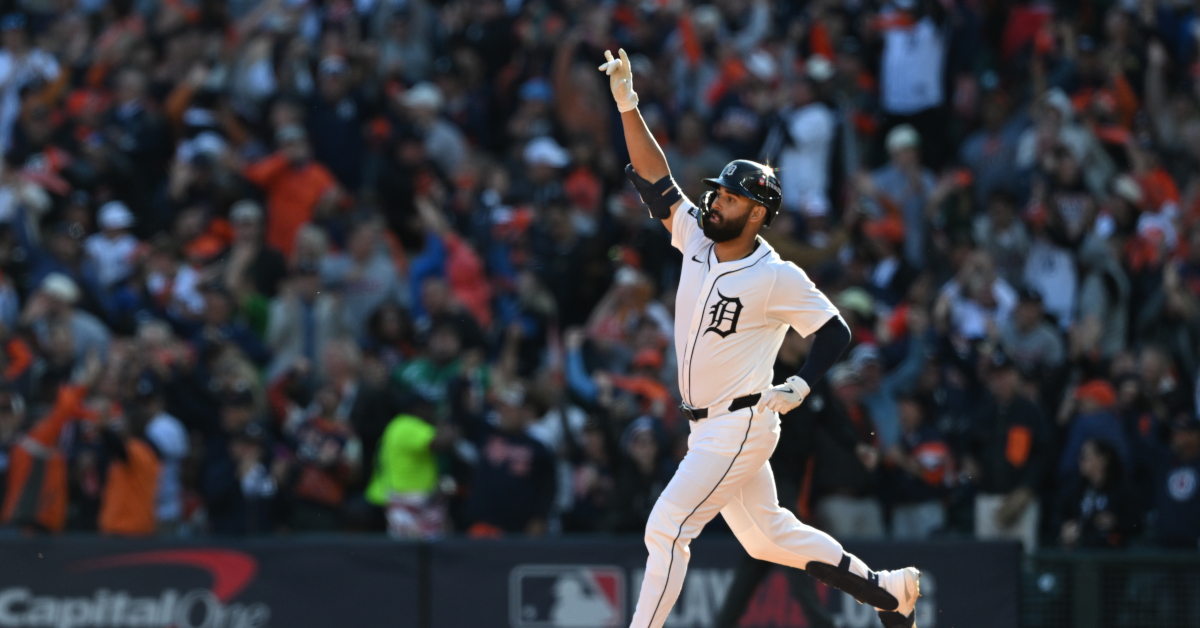
Maybe the three runs the Tigers scored in the ninth inning of their Game 3 blowout loss weren’t so inconsequential after all. Maybe they were a sign of better things to come on Wednesday. Facing elimination, Detroit’s bats woke up in a big way in Game 4 en route to a 9-3 victory. That sends the American League Division Series back to Seattle on Friday for a decisive Game 5, allowing Tarik Skubal one more chance to beat the Mariners for good.
Consider this: Through the first three games of the ALDS, the Mariners had hit more home runs than the Tigers had extra-base hits. Kerry Carpenter hit a home run in Game 1, the team’s lone long ball to that point, and Spencer Torkelson and Gleyber Torres each had a pair of doubles, but that was it. Granted, three of those extra-base hits drove in runs, and two of them tied the game — the Tigers made the most of their limited opportunities — but Seattle had been absolutely outslugging Detroit:
| Player | H | RBI | WPA | wOBA | xwOBA | wRC+ |
|---|---|---|---|---|---|---|
| Gleyber Torres | 4 | 0 | 0.03 | 0.382 | 0.372 | 147 |
| Spencer Torkelson | 2 | 4 | 0.39 | 0.299 | 0.337 | 90 |
| Colt Keith | 1 | 0 | -0.05 | 0.225 | 0.370 | 39 |
| Kerry Carpenter | 1 | 3 | 0.00 | 0.210 | 0.405 | 29 |
| Riley Greene | 2 | 0 | -0.15 | 0.147 | 0.117 | -14 |
| Zach McKinstry | 1 | 1 | 0.10 | 0.131 | 0.145 | -25 |
Indeed, outside of Carpenter’s clutch home run, a pair of two-run doubles from Torkelson, and four hits off the bat of Torres, the Tigers offense had been conspicuously absent during the series. Even after their mini-rally in the ninth on Tuesday, Detroit was batting .165 and slugging .233 as a team entering Game 4. On the other hand, Seattle was slugging .423 even while batting just .212 through three games. That narrative completely flipped on Wednesday. The Tigers collected seven extra-base hits (three home runs and four doubles), while the Mariners could only muster one. Torkelson, Torres, Zach McKinstry, and Javier Báez each had multiple hits, and Jahmai Jones had a huge pinch-hit double in the decisive fifth inning.
And as they have all series long, home runs defined the shape of Game 4. Riley Greene had been mostly bottled up during the ALDS; he had collected just two hits through the first three games of the series. His first extra-base hit against Seattle was a 454-foot blast to give the Tigers a 4-3 lead in the sixth inning. After hitting 36 homers during the regular season, his go-ahead home run was the first of his postseason career and broke open the floodgates for the Tigers. For his part, Báez hit his first postseason home run since the 2017 NLCS, a two-run shot, later in the inning. Then in the seventh, Torres continued his hot hitting by launching an opposite field solo shot to extend the Tigers’ lead, making it 8-3.
The game hadn’t started off so lopsided. As they have in each game of the series, the Mariners got on the board first, scoring a run in each of the second, fourth, and fifth innings. With a 3-0 lead halfway through the ballgame, things were looking pretty encouraging for the Mariners. They’ll likely look back on Wednesday and be haunted by some pretty big missed opportunities to put the game away early. In the fourth, Seattle loaded the bases with no outs, but wound up pushing just one run across after a double play and a pop out squelched the threat. The next inning, the first two batters reached, earning the team another run, but the Mariners couldn’t keep the rally going.
Things turned in the bottom half of that inning. Torkelson led off with a single, and after a fielder’s choice, Dillon Dingler drove in the Tigers’ first run with a double. That chased Bryce Miller from the game, and Mariners manager Dan Wilson went with trustworthy lefty Gabe Speier to face the bottom of Detroit’s lineup. Jones, pinch-hitting for Parker Meadows, ripped the first pitch he saw down the left field line to drive in Dingler, and Báez tied the game with a single up the middle in the next at-bat. Speier came back out in the sixth inning to face Greene, but the Tigers left fielder turned on a hanging slider and deposited it in the right field stands. From there, the flood gates opened. The Tigers scored three more in the sixth, capped off by Báez’s home run off Eduard Bazardo, and they added insurance runs in the seventh and eighth.
For Seattle, it’s a pretty concerning shift from what had been a fairly dominant bullpen through three games. Even when you include the three runs allowed by Caleb Ferguson in the ninth inning of Game 3, Mariners relievers had put up a 3.38 ERA and a 1.71 FIP in 13.1 innings during the ALDS — their ERA drops to 1.35 if you ignore those garbage time runs. The Tigers have also scored all of their runs in this series in the fifth inning or later, putting even more pressure on the Mariners’ relief corps.
The runs Speier and Bazardo allowed in Game 4 were their first of the series, and you have to wonder if familiarity is starting to work against Seattle’s ‘pen. Bazardo has appeared in all four games, while Speier has now gotten some high-leverage work in three of the four games, including facing Carpenter and Greene three times apiece. Because Detroit’s most dangerous hitters are left-handed, Speier will almost certainly be called on to work in Game 5 on Friday, and thanks to Ferguson’s struggles on Tuesday — he’s the only other lefty in Seattle’s bullpen — Speier seems like the most critical piece of the pitching puzzle for Wilson and the Mariners.
The Tigers turned to Game 1 starter Troy Melton to shut down the Mariners bats once they had tied it up in the fifth. Melton worked around some trouble in the sixth, getting Randy Arozarena to fly out to center after allowing two two-out baserunners. The right-hander carved through the heart of the Mariners order on seven pitches in the seventh, then erased a leadoff baserunner in the eighth with a made-to-order double play, again only needing seven pitches to set the M’s down in order; he has to have Tigers manager A.J. Hinch feeling really good should the team need a fireman to quell a late rally from the Mariners on Friday. Will Vest closed the door with a 1-2-3 ninth.
While Detroit’s starter for the decisive Game 5 isn’t in question, Seattle’s is still unsettled. Both George Kirby and Luis Castillo could start Friday’s game on normal rest, and both looked pretty good in their earlier starts this series. Ultimately, it’ll come down to who Wilson trusts more to work through the Tigers’ lineup twice, with whoever doesn’t make the start likely available out of the bullpen anyway. I should mention that between the two, Kirby is the only one who has made a relief appearance during his big league career, closing out Game 2 of the 2022 Wild Card series against the Blue Jays.
No matter who starts for the Mariners on Friday, this was the exact scenario they were hoping to avoid. Allowing Skubal two opportunities to affect the outcome of the series is a very dangerous proposition, even if Seattle has beaten him three times this year. Tempting fate a fourth time tips the scales toward Detroit; our ZiPS game-by-game odds currently give the Tigers a 54% chance of advancing to the ALCS (assuming a Kirby start for Seattle). That’s a percentage Mariners fans are well acquainted with.

